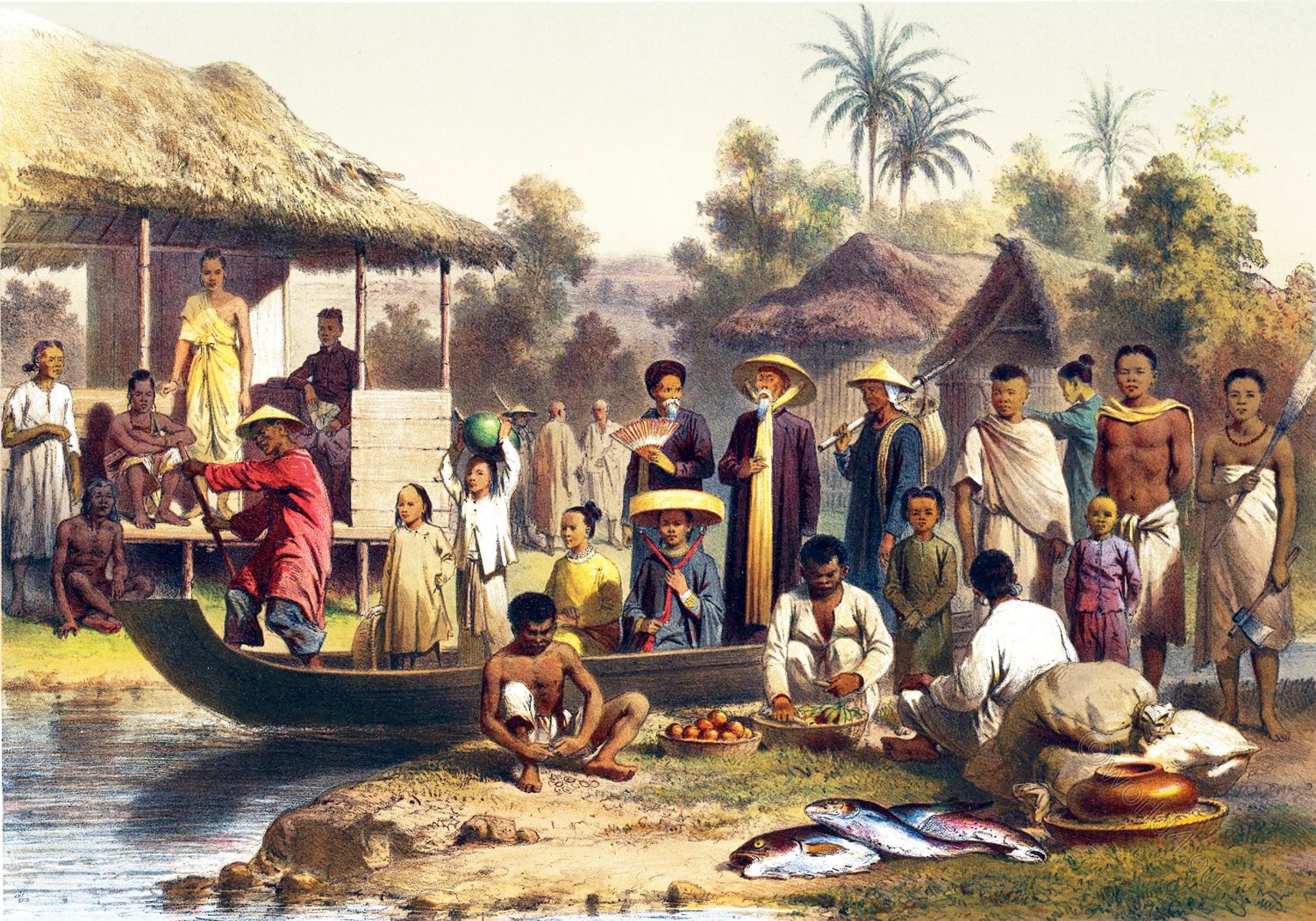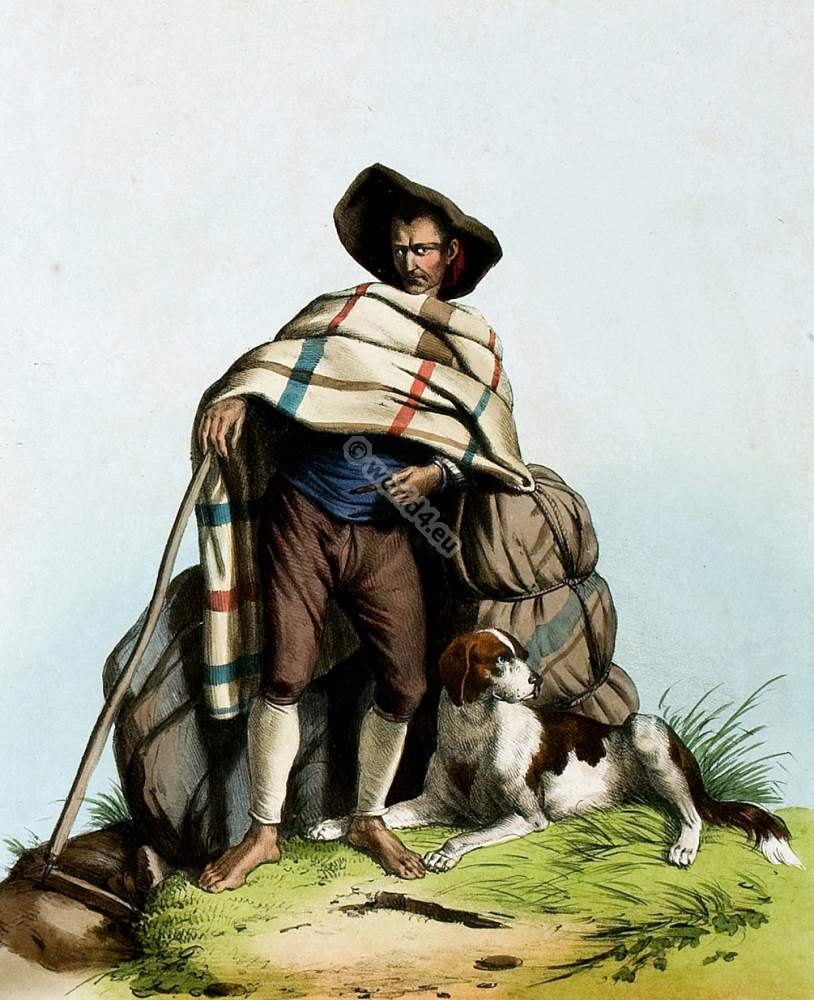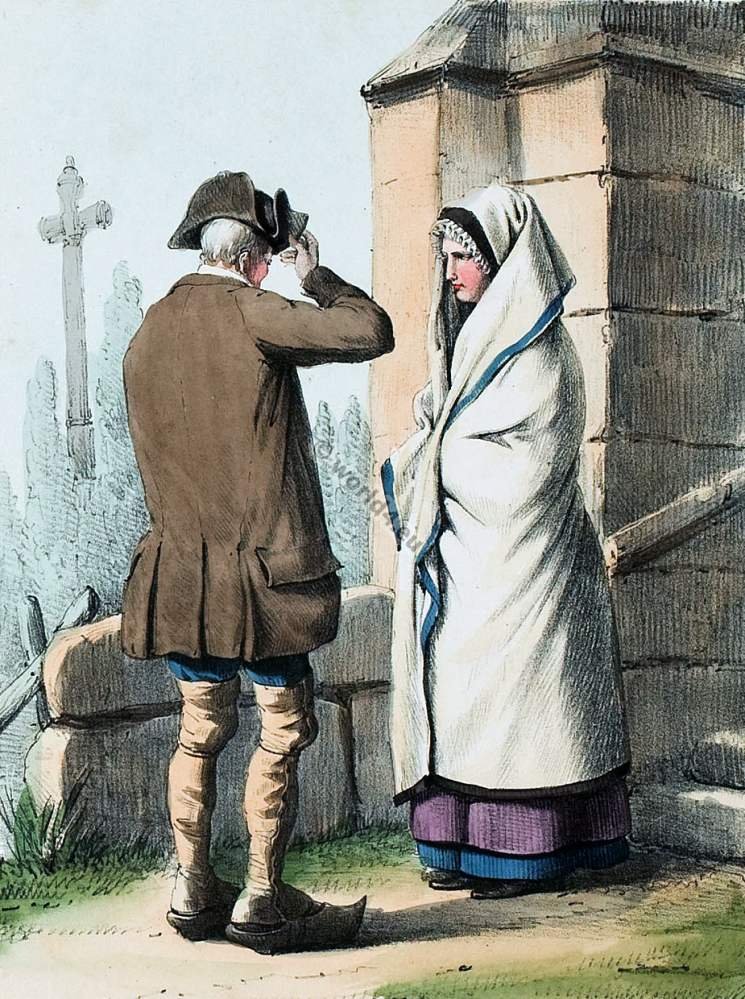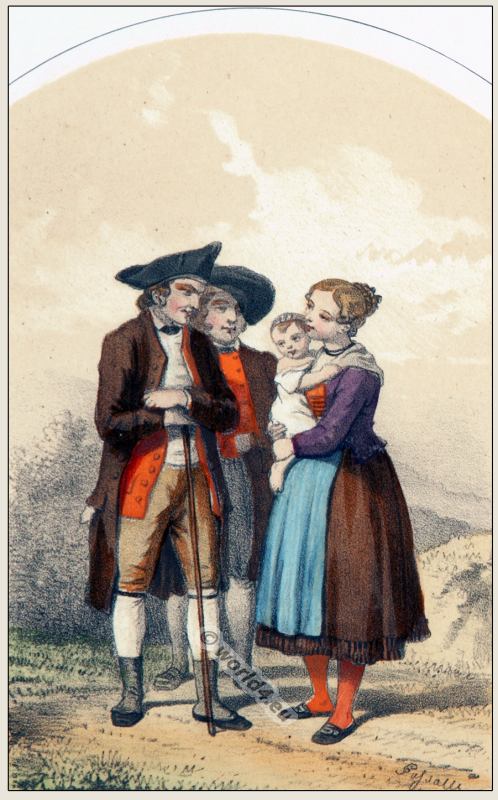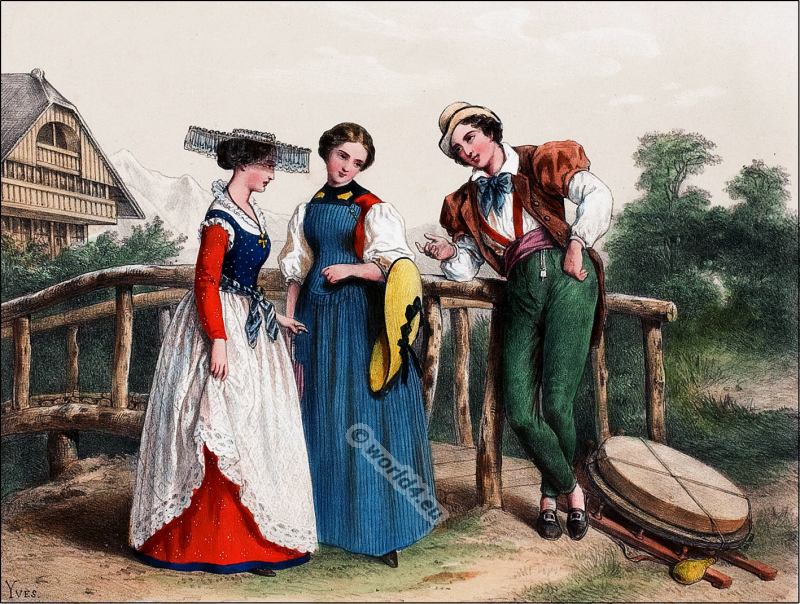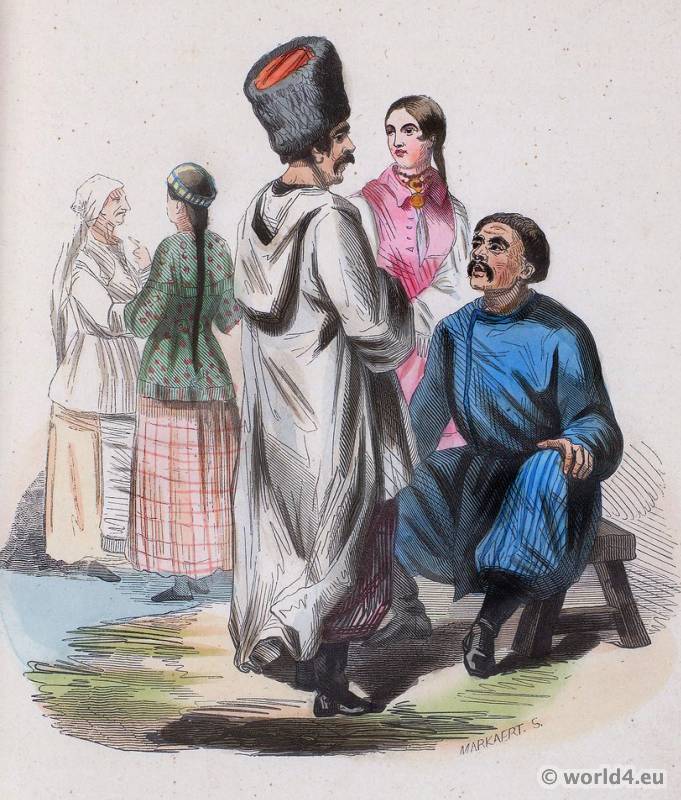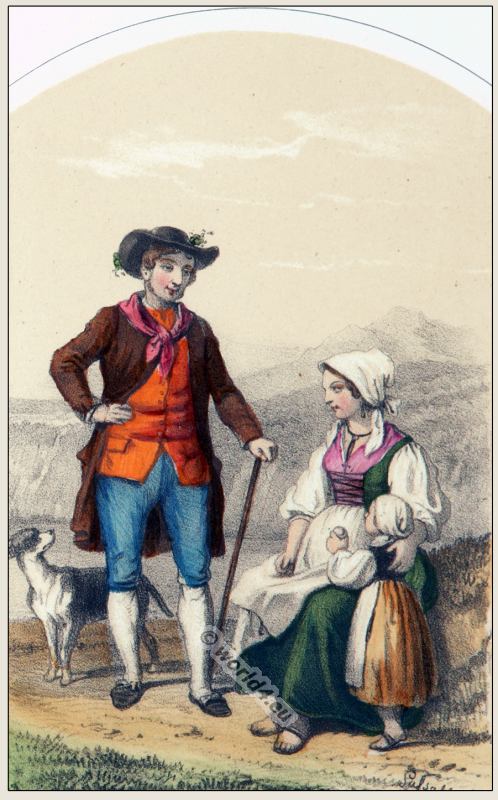PLATE X
ANNAMITE, CAMBODIAN AND SIAMESE COSTUMES.
A sampan or river boat used in Cochinchina *) glides along a narrow canal; it is ridden by a dozen Annamites of all conditions. In the middle, we see an old village chief with a grey moustache, wearing a large hat and an embroidered silk dress. A scholar with a black turban on his head, a lady in a large dress, women, children and two boatmen fill the boat.
*) Cochinchina, French Cochinchine, Vietnamese Nam Kỳ (from Chinese 南圻, “southern border”) is an old name for southern Vietnam and parts of eastern Cambodia, between 1863 and 1954 especially for the French colony of that name.
In the left-hand corner sit two naked savages. Under a small shed a group of Siamese men and women are standing. –
On the right are several Cambodians, some dressed in Siamese style, others with their hair cut into brushes and barely clothed. The women are wearing the fashion of Compong Luong, the old capital, a kind of shirt that sticks to the body as their only clothing. – The fabrics used by the rich are of brightly colored silk, the poor use only white or indigo-dyed cotton.
PLANCHE X
COSTUMES ANNAMITES, CAMBODGIENS ET SIAMOIS.
Un sampan ou barque de rivière employée en Cochinchine glisse sur un étroit canal; elle est montée par une dizaine d’Annamites de toutes conditions. Au milieu, on voit un vieux chef de village à moustache grise, coiffé d’un large chapeau et vêtu d’une robe de soie brodée. Un lettré la tête ceinte du turban noir, une dame en grande toilette, des femmes du peuple, des enfants et deux bateliers achèvent de remplir la barque. — Dans le coin de gauche, sont assis deux sauvages tout nus. Sous un petit hangar se tiennent des Siamois hommes et femmes. — A droite sont groupés plusieurs Cambodgiens, les uns vêtus et coiffés à la siamoise, les autres les cheveux coupés en brosse et à peine vêtus. Les femmes portent à la mode de Compong Luong, l’ancienne capitale, une espèce de chemise collant au corps pour tout vêtement. — Les étoffes employées par les riches sont de soie aux brillantes couleurs, les pauvres se servent seulement de coton blanc ou teint d’indigo.
Source: Voyage d’exploration en Indo-Chine: effectué pendant les années 1866, 1867 et 1868 by France. Commission d’exploration du Mékong (1866-1868), author; Francis Garnier (1839-1873, editor); Ernest Doudart de Lagrée (1823-1868); Louis Delaporte (1842-1925, illustrator); Eugène Joubert (editor); Clovis Thorel (1833-1911, editor); Hachette (Firm), publisher; Imprimerie Lemercier et cie, lithographer, 1873.
Discover more from World4 Costume Culture History
Subscribe to get the latest posts sent to your email.

